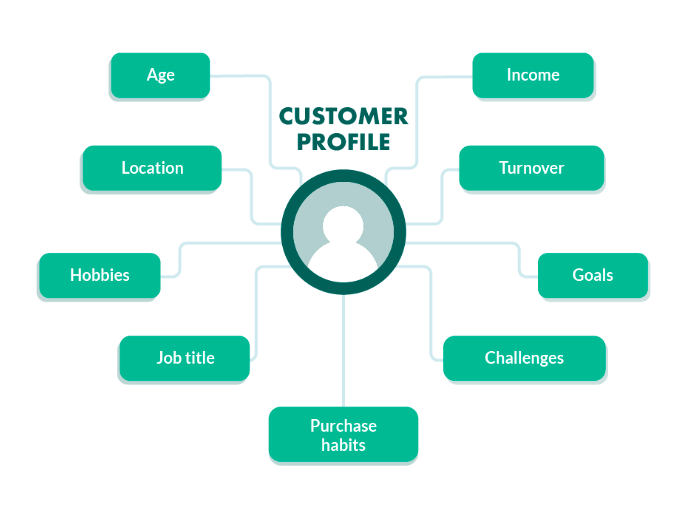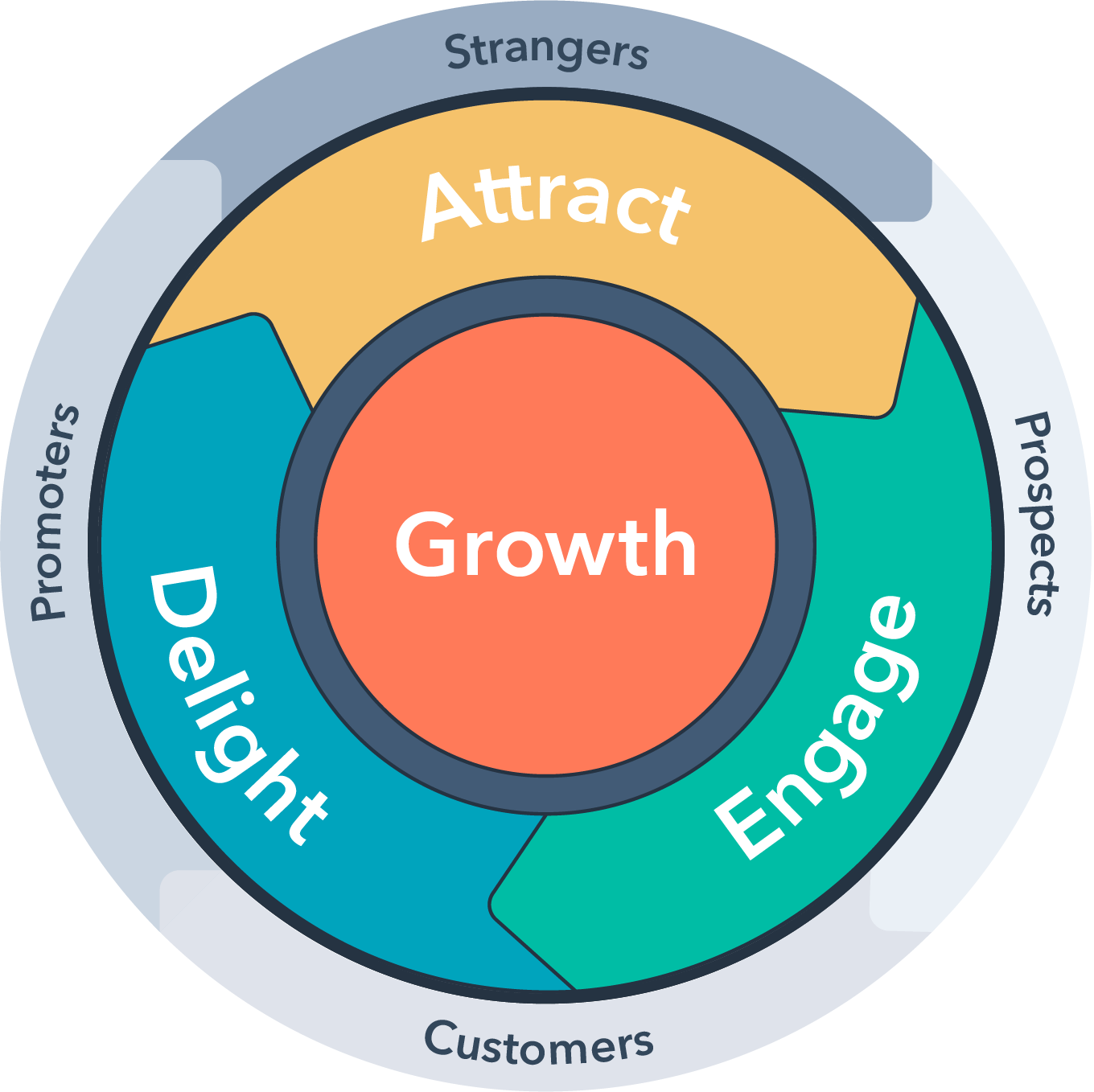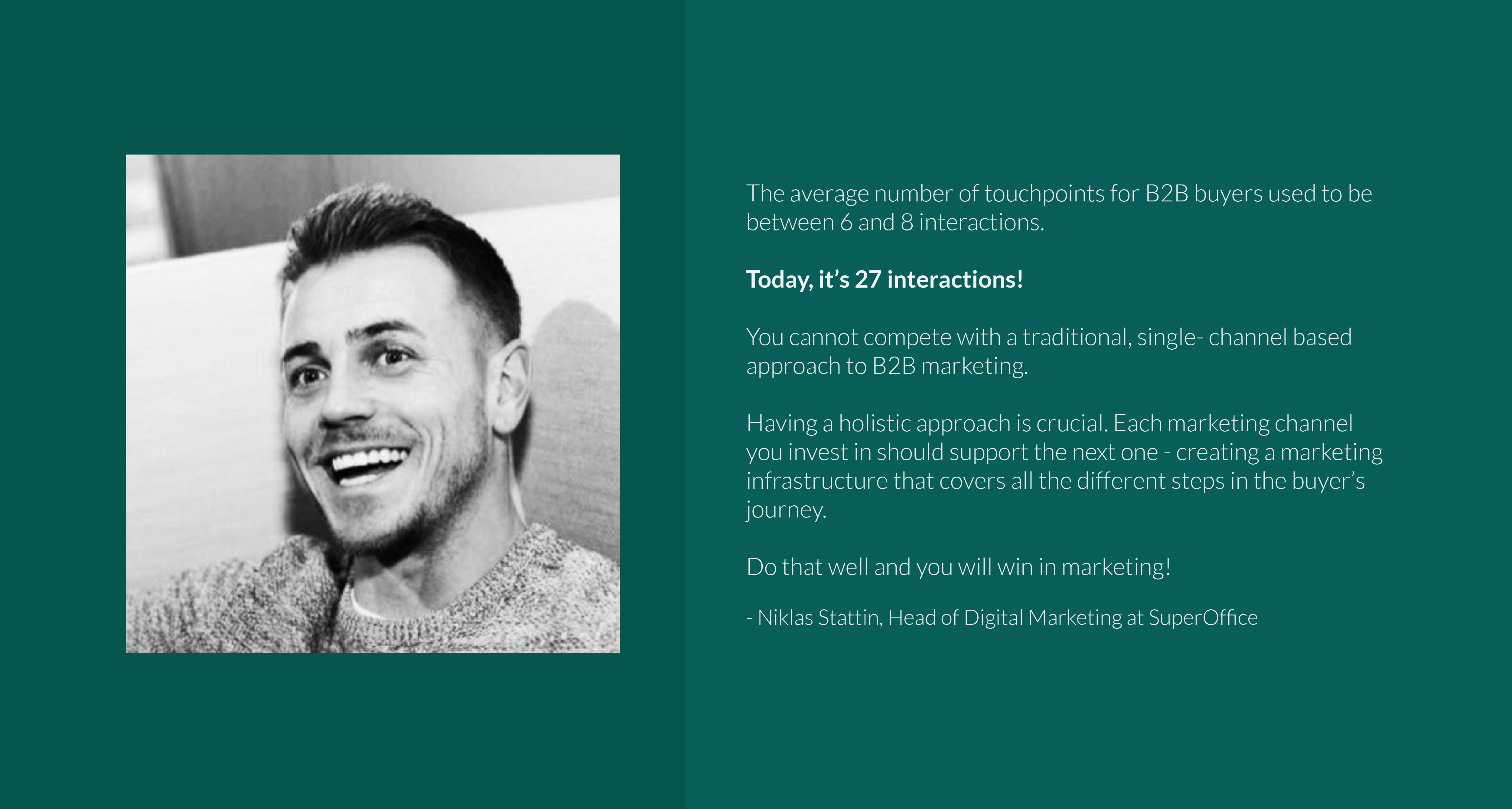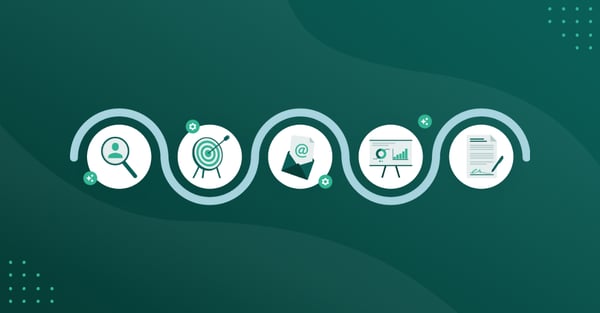Table Of Contents
B2B marketing is simple:
Attract new customers and keep existing customers.
Easy, right?
Not so fast.
While the marketing part might sound easy, it’s the buying process that’s complex.
The B2B buyer has changed. They’ve evolved.
B2B buyers are:
- Thorough (67% of the buyer’s journey is now done digitally)
- Tough negotiators (B2B buyers refuse four offers before accepting the best one)
- Demanding (77% of B2B Buyers say their latest purchase was either “Difficult” or “Very Complex”)
- Impatient (80% of B2B buyers have switched suppliers at least once within a 24-month period).
And they have every right to be.
Especially when they’re investing $50,000+ into a new platform.
Now, their journey might start with a Google search, but between that and a purchase, there’s thousands of subtle movements from one stage to the next.
B2B buyers consume so much content about your brand, your products and your competitors that they probably know more than you do.
Think about it:
…They research products online
…They speak with friends, colleagues and their networks
…They compare your product to a competitors
And finally, when they’re ready to talk to sales, they contact you.
Each time you get their attention, you need to keep it.
How do you get their attention? Well, it starts by truly understanding them.
And that’s where modern day B2B marketing begins.
Your audience.
Define your target audience
Your audience consists of two parties:
- People you’ve sold to
- People you’ve never sold to
The strategies differ depending on who you want to communicate with.
But what shouldn’t differ is your understanding of what it is they need.
Get that right, and you’ll have no problem with your B2B marketing campaigns.
(Again, easier said than done).
So, how do you get there?
It happens in three stages:
1. Speak with existing customers. If you have paying customers, speak with them. Find out how they use your product and services and what you can do to make their workday better. This is your existing customer profile and you can use the feedback they share to make your products and services better, which helps to keep them longer.
2. Create an ideal customer profile (ICP). When you’ve spoken to enough customers, you’ll have a better understanding of who gets the most value from your business. Create an ICP/ buyer persona that makes it clear who this type of customer is. That’s your prospect list.

3. Communicate with both groups. Now you know who you want to communicate with, the next step is to execute on a marketing strategy that’s relevant to them. The same messaging won’t always work with both groups, as customers are familiar with your company and prospects might not be. That’s why you need to set a goal.
Set a B2B marketing goal
There’s two types of B2B marketing strategies - acquisition and retention.
Acquisition marketing refers to the process of targeting and marketing to new audiences to gain new customers. The type of leads that are the target of an acquisition strategy are in the consideration stage of the marketing journey, meaning that they aren't brand new audiences who are unaware of your brand.
Here’s why acquisition marketing is important:
- Allows a company to systematically draw in and convert new consumers
- Increases the rates of lead generation and conversion
- Boosts overall company revenue
- Broadens a company's overall customer database
- Attracts other customers to learn more about a company's products and services
Retention marketing is the activity an organization uses to increase the likelihood of a customer renewing their subscription, while focusing on increasing the profitability of each customer through expansion and upselling.
Here’s why your organization should focus on retention marketing:
- Retention is cheaper than acquisition
- Loyal Customers are More Profitable
- Engaged Customers Provide More Feedback
- Gaining insight into your customers
- Reduce customer churn
Retention marketing starts with existing customer data. SuperOffice CRM is designed to capture each interaction a customer has with your brand - giving you the insights you need to provide a better customer experience.
Book a demo today to see how SuperOffice can support your retention strategy.
These two B2B marketing strategies are not to be confused.
It really does depend on your marketing goals:
- Drive new business?
- Keep existing business?
Here’s the key differences between acquisition marketing and retention marketing - and how you can measure them based on your marketing goals.
| ACQUISITION | RETENTION |
| Grow customer base | Reduce churn |
| Increase sales | Increase LTV |
| Increase brand awareness | Increase customer advocacy |
| High marketing costs | Low marketing costs |
| Combination of B2B marketing and sales | Combination of B2B marketing, sales, product and customer service. |
Which strategy is right for you?
Well, it depends.
A new start-up won’t be using the same marketing strategy as a fortune 500 company. (
At least, they shouldn’t be).
Ask yourself - where are you on your growth journey?
- Launch: When you launch, you have no customer base so you will be 100% focused on acquisition.
- Gaining traction: As you start to see sales, you start to allocate resources to retention marketing to help keep those customers you’ve acquired.
- Growth: In growth mode, you’re seeing more new customers come in, and need to balance both acquisition and retention.
- Established: By the time you’re an established company in your space, you will be splitting your strategy 50-50 between acquisition and retention.
- Preferred brand: The final stage is when you lean more on retention marketing than acquisition - helping you reach profitability and become the preferred brand in your space.
Now, before you decide on where you go next, here’s something to consider.
These two strategies do not compete.
In fact, companies that focus on both do better. A lot better.
You see:
Acquisition costs will increase over time as you scale and competition grows. So while the cost of acquiring a new customer might be affordable today, it may not be in 10-12 months from now.
On the other hand, customer lifetime value (CLV) costs will decrease over time as you invest in building relationships with customers and delivering high quality product and service. So, while the cost of retaining a customer starts off expensive, it lowers as customers continue to see the value you deliver for them.
That’s why you need to do both - and focus on short-term and long-term strategies.
And that’s where the marketing flywheel comes in.
You see, traditional marketing funnels stopped after conversion - the point at which a prospect becomes a customer.
But here’s the thing - that’s not the end of the relationship. It’s not the start of it, either.
The B2B buying process is not a linear A to Z journey.
It’s a relationship. It’s wholesome. It’s cyclic.
It’s why so many B2B marketing teams are moving from funnel to flywheel.

Image source: HubSpot
So, what is the marketing flywheel?
It’s a continuous, repeatable and scalable approach to marketing.
The more you invest and build on each section, the more powerful it becomes.
While the traditional marketing funnel consisted of awareness, consideration and decision (conversion), the B2B marketing flywheel consists of attract, engage and delight.
Let’s take a closer look at each one.
Attract
The “Attract” stage of the marketing flywheel is all about building awareness of your brand. The goal here is to get your brand name into the minds of the customers - so that when they are looking to buy a product or service that you offer, they think of you - and only you.
You can attract your audience by sharing insights, knowledge and expertise on your website, social profiles and blog - helping you increase awareness in search engines and social media platforms.
Sharing relevant content is a great way to build trust and gives prospects and customers the opportunity to decide if they have an interest in the products and services you provide.
Engage
Unlike the traditional funnel, the “Engage” stage of the marketing flywheel is not about handing “leads” over to sales teams. In the flywheel, marketing teams are engaging with both prospects AND customers. This is your opportunity to provide real value and strengthen customer relationships.
You can engage with prospects and customers by showing them how your products and services solve real business challenges through the form of guides, tutorials, webinars and free trials.
This stage is more than B2B marketing and opens up communication with sales teams (showing prospects how to use the product) and support teams (solving any open issues reported by the customer).
Delight
The “Delight” state of the marketing flywheel turns a process into an experience - and a positive one they want to share. Unlike B2C buyers and transactional sales, B2B buyers are looking for a relationship - someone they can consult and spar with, and someone that empowers them to reach their business goals.

You can delight prospects and customers by delivering an amazing customer experience - this includes constant product innovation, great customer service, omnichannel support, customer feedback (i.e. NPS) and customer loyalty programs.
What happens when you delight your customers? They spread the good word for you - thus creating a loop back to the attract phase and setting the flywheel in motion, again.

Image source: HubSpot
Now you know the strategies and how B2B marketing has evolved from funnel to flywheel, here’s the top B2B marketing channels you can use to help you communicate your message and reach your target audience.
Communicate in the right B2B marketing channels
When it comes to B2B marketing channels, what comes to mind?
LinkedIn? Email marketing? Events? TikTok?
Of course, they all work. And they’re effective.
But rather than try to narrow down a specific channel, let’s talk categories.
The number of channels to communicate with your audience fall into the categories of owned, earned and paid.
In short, the difference between owned, earned and paid media are:
- Owned media: includes the media channels that you run and control yourself, like your website or email newsletter.
- Earned media: includes the channels used by others to share content and messages about your organization.
- Paid media: concerns all exposure that you pay for and can vary from banners to ads for search engines, and advertorials and product placements.
Let’s take a closer look at each one in more detail, along with some examples for how to use them as part of your B2B marketing strategy.
Owned media
Owned media is targeted towards existing customers, partners, subscribers and prospects - people that are somewhat familiar with your company.
- Website and blog: A website and blog is a great platform to communicate products, services and expertise to your target audience. The more content you publish, the more likely it is that your target audience will discover you via Google search (SEO).
- Social media: Social media helps companies share their content with people in their network. You can share it directly from a branded profile or a personal profile. The most popular social media platforms for B2B marketing are LinkedIn, followed by Facebook and YouTube.
- Newsletter: With a verified list and an active readership, email is a great way to communicate with your target audience. But with the number of emails shared daily with subscribers, it’s important to make your email content stand out and deliver value.
Email marketing is still the most effective way for brands to communicate with their audience. Customers prefer it, and it delivers better ROI than any other marketing channel.
Book a demo today and we’ll show you how SuperOffice Marketing can help you achieve your marketing goals.
Earned media
Earned media includes user generated content, such as comments on blogs, discussions in groups and on forums, and on third party websites.
- Review sites: people leave reviews or ratings on third party eview websites like Capterra, G2 and Software Advice.
- Social media: people share your content on social media with their network to show that the content is relevant, interesting and valuable, creating a discussion and increasing awareness for your brand.
- Online mentions: Third party websites that compare your product or service with other providers in the space, blog posts that reference your content or thought leaders that mention your brand as a trusted resource.
Paid media
All channels that you pay for in order to distribute communication to your target audience falls into paid media. This includes search ads, banners, advertorials and product placements.
- Paid search: companies can buy top placements in Google for specific terms their target audience searches for. Through Google Ads, you can buy exposure through text, display and remarketing campaigns.
- Sponsored updates: As organic reach continues to decline on social media platforms, you can pay for more exposure through sponsored updates. Both Facebook and LinkedIn offer a high level of targeting options allowing you to show ads to the right audience.
- Advertorials: You can buy attention through advertorials online on relevant websites that attract your ideal customers. Another way to target relevant buyers is to take out full-page ads in industry magazines.
BONUS: Sales
B2B sales is a key channel for B2B marketing. It has to be.
Trillions of dollars are lost every year due to a lack of alignment between sales and marketing teams. And the more complex the buying process, the more aligned the teams need to be. From first-hand input to distribution, here’s how sales can be a channel of support to marketing teams.
- Social selling: The biggest social media channel for B2B buyers is LinkedIn. With 830 million members, sales teams can share relevant content as a way to start conversations with decision makers.
- Outbound: It’s difficult to book sales meetings through cold email outreach, so start off small, and link to content from the company blog instead. When prospecting, if you reach out to someone in the construction industry, link to your construction trends article. The more specific, the better.
- Thought leadership: Sales reps get first-hand insight from their buyers. Use that knowledge and create content in email, social media and industry news sites. Sharing expertise drives people to your website, which marketing teams can capture through lead gen forms.
Combining owned, earned and paid media
Just like acquisition and retention marketing strategies, it’s best to combine channels and tactics.
Here’s how you can do that:
- Promote blog posts (owned) on LinkedIn (paid)
- Ask people on your website (owned) to leave product reviews (earned)
- Use product reviews (earned) as social proof on your product pages (owned)
- Promote reviews (earned) as sponsored ads on Facebook (paid)
Now, the million dollar question…
…Which channel is right for you?
There is no one answer here.
But we can help you get started:
Where do you customers and ideal customers spend most of their time?
Start there.
You can do all of this manually, or you can use technology to help you succeed.
From automation to tracking and reporting, data collection and security - here’s the technology that every B2B marketing team needs to invest in.
Invest in B2B marketing technology to support the process
You realize the need for B2B marketing technology.
Great! Now you need to find one that suits your needs.
Good luck! There’s more than 8,000 to choose from!
But, don’t let that deter you.
Instead of trying every new tool (also known as shiny object syndrome), focus on the parts of your strategy that require technology. For example, you don’t need to invest in ad tracking technology if you’re not investing in paid search.
Instead, focus on a few key areas of your strategy that would benefit from technology.
To help you, we’ve grouped key martech that the majority of B2B marketing departments need by content and advertising, analytics, intelligence and insights and platforms, data and automation.
Let’s dive into each one to see how they support your B2B marketing strategy.
Content and advertising
- CMS: To have a website and be present online, you need a content management system (CMS). A CMS is used to create and manage content such as product pages, landing pages and a blog.
- Ad campaigns and attribution: Ad platforms like Google Ads allow you to pay for top placements in Google search for decision-makers looking to find a solution. While it can be expensive, it’s a great way to increase brand awareness to buyers that may not be familiar with your brand.
- Email marketing platform: Email marketing is a great way to communicate with prospects and customers. Use email marketing to communicate new products, company news and new content.
- Conversion optimization: Once you have “enough” people visiting your website, you can then turn your attention to converting more visitors into buyers. You can do this through behavioral analysis, A/B testing and form optimization.
Analytics, intelligence and insights
- Tag Manager: The more tracking scripts you have on your website, the more it slows it down. Tag managers make it easy by combining all scripts into a single script. You can use as many scripts as you need and the website won’t be affected.
- Web analytics: Understanding how people behave on your website, where they come from and how long they engage with it is key to succeeding with digital marketing. That’s what web analytics allows you to do.
- Lead scoring: This helps B2B marketers handover sales ready leads - people ready to engage in a sales process - to sales teams. Rather than have sales reps reach out to buyers not ready to buy (which does nothing, other than annoy buyers).
- IP tracking: Unless someone completes a form on your website, it’s difficult to know more about them, other than them being an anonymous visitor. IP tracking solves that problem - to a degree - by showing you the company name that visits your website. This allows you to see if you’re attracting the right kind of audience.
Platforms, data and automation
- CRM: Collect, store and manage prospect and customer data in a cloud-based CRM platform. Use the data and automated insights to deliver a more personalized marketing communication based on interests, behavior and interaction history.
- Marketing automation: From sign up to nurture, from deal signing to lifecycle campaigns, marketing automation eliminates the manual workload required to communicate with prospects and customers at different stages of the customer journey.
- Customer data platform: Customer data platforms (CDP) tell you everything about a customer inside a single dashboard, including opened emails, tickets responded to and sales reps they’ve communicated with. It provides you with a 360-degree view of a customer.
We get it. There’s a lot of tech to choose from.
And that’s why B2B marketers choose SuperOffice CRM.
SuperOffice CRM includes a customer data platform, CRM and email marketing platform in one solution. Plus, with deep interactions to CMS, marketing automation and IP tracking tools, the majority of your martech is grouped together in a single platform.
Want to learn more about SuperOffice CRM? Book a demo here.
One thing to note:
Strategies, channels and technology do not work in silo.
It’s not one or the other. They all work together.
That’s how you achieve a holistic approach to marketing.
Take a holistic approach to B2B marketing
Less than five years ago, a buyer would interact with your brand a handful of times before making a purchase. It made a lot of sense to be visible in 1 or 2 channels back then.
That’s no longer the case.
Think about the customer journey. Think about your own buying experience.
It’s not linear. That’s why a holistic approach to marketing is required.
When it comes to holistic marketing, there’s no better expert than our very own Niklas Stattin, Head of Digital Marketing at SuperOffice. Here’s why he believes you should consider adopting a holistic approach.

Every marketer dreams of reaching this stage:
Delivering the right message, to the right person, in the right channel at the right time.
Google calls this winning the moments that matter.
And It's long been considered the Holy Grail of B2B marketing.
So, how do you get there?
Data and technology are critical. Platforms like CRM provide insights that give us context into who and where the buyer is and at the stage of their journey.
And the more you engage with a buyer, in the channels they are active in, the more data points you collect to understand them on a deeper level. The more you understand them, the more personalized your marketing communication can be.
That’s how you acquire them. And that’s how you retain them.
And that’s how you create a successful B2B marketing strategy.
Whether you’re looking to acquire new customers or retain existing customers, a CRM platform is the foundation of your B2B marketing strategy. Book a 30-minute demo with one of our CRM experts and we’ll show you how SuperOffice CRM can help you reach your B2B marketing goals.
Customers also ask
What is the difference between B2B and B2C marketing?
Business to business (B2B) and business to consumer (B2C) marketing strategies differ as they’re based on attracting two specific audiences. B2B marketing strategies attract businesses whereas B2C marketing strategies attract consumers.
Why is B2B marketing important?
B2B marketing is important as it makes it easier for companies to acquire new customers, keep existing customers and grow their business. A solid B2B marketing strategy can help withstand market and economic crises. Without B2B marketing, you will be neglected by your audience.
What is most vital to the success of B2B marketing?
The most vital success in B2B marketing is empathy - having a genuine understanding of who your ideal customer is and the pain points and challenges they face. You can use empathy to create a marketing strategy that uses storytelling and creativity that aligns on who they are to create long-term business relationships.
Resource’s you’ll love
- Email Marketing: A Data-driven Guide For B2B Companies
- Relationship Marketing: 3 Ways to Create Lifelong Customers
- Customer Marketing: Three Proven Growth Marketing Strategies
- 21 Of The Best B2B Email Marketing Campaigns (With Real Examples)



